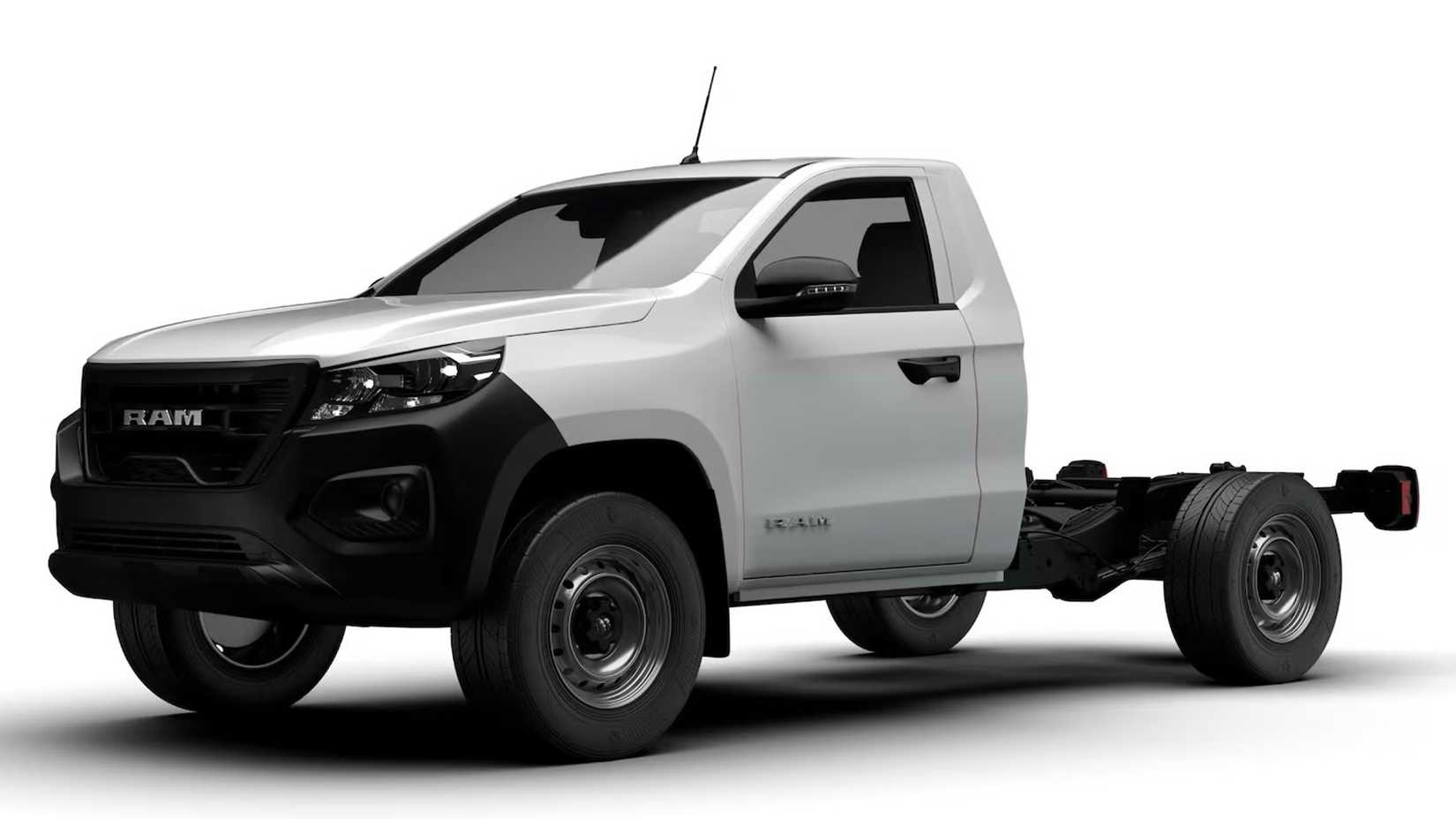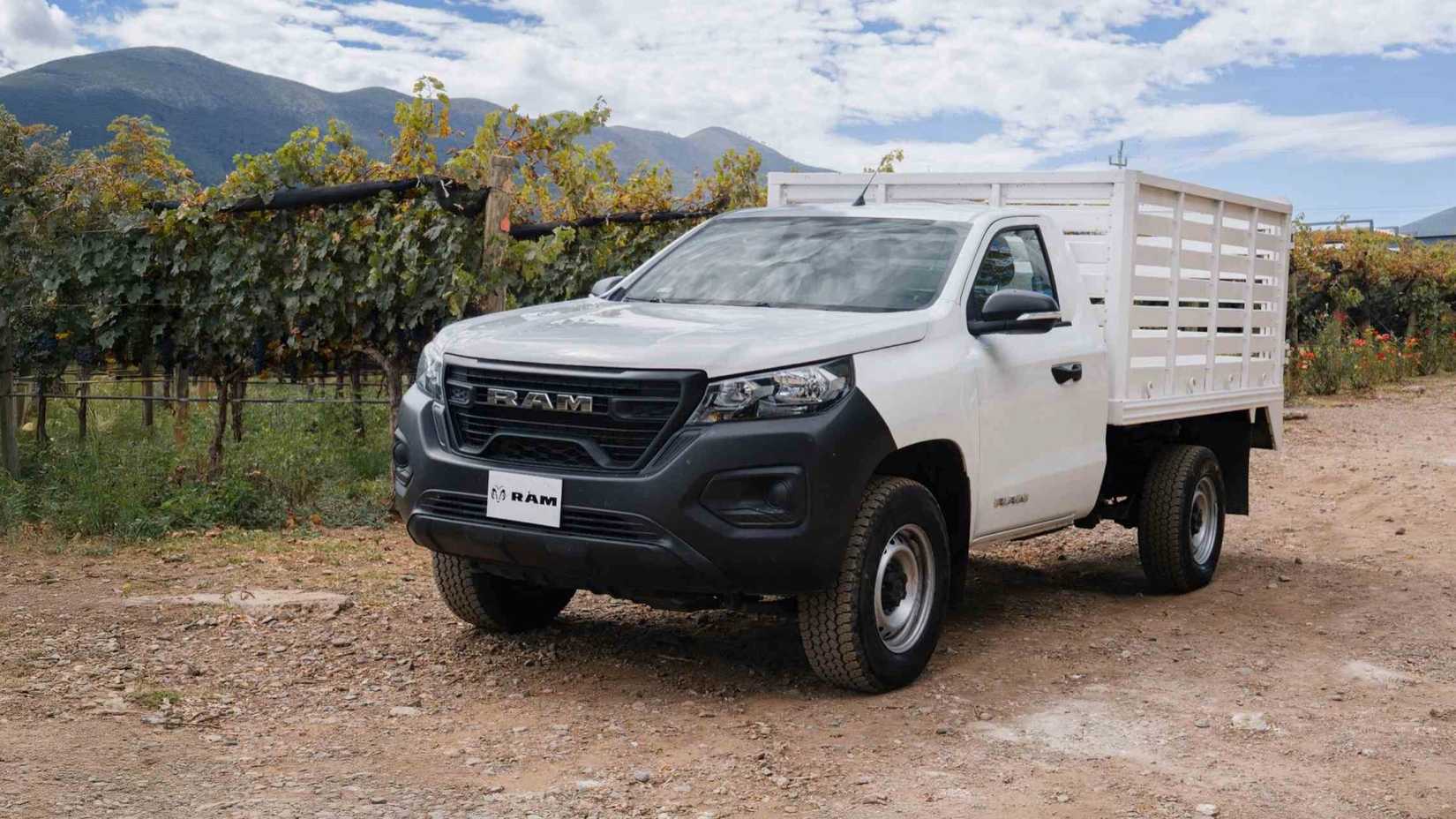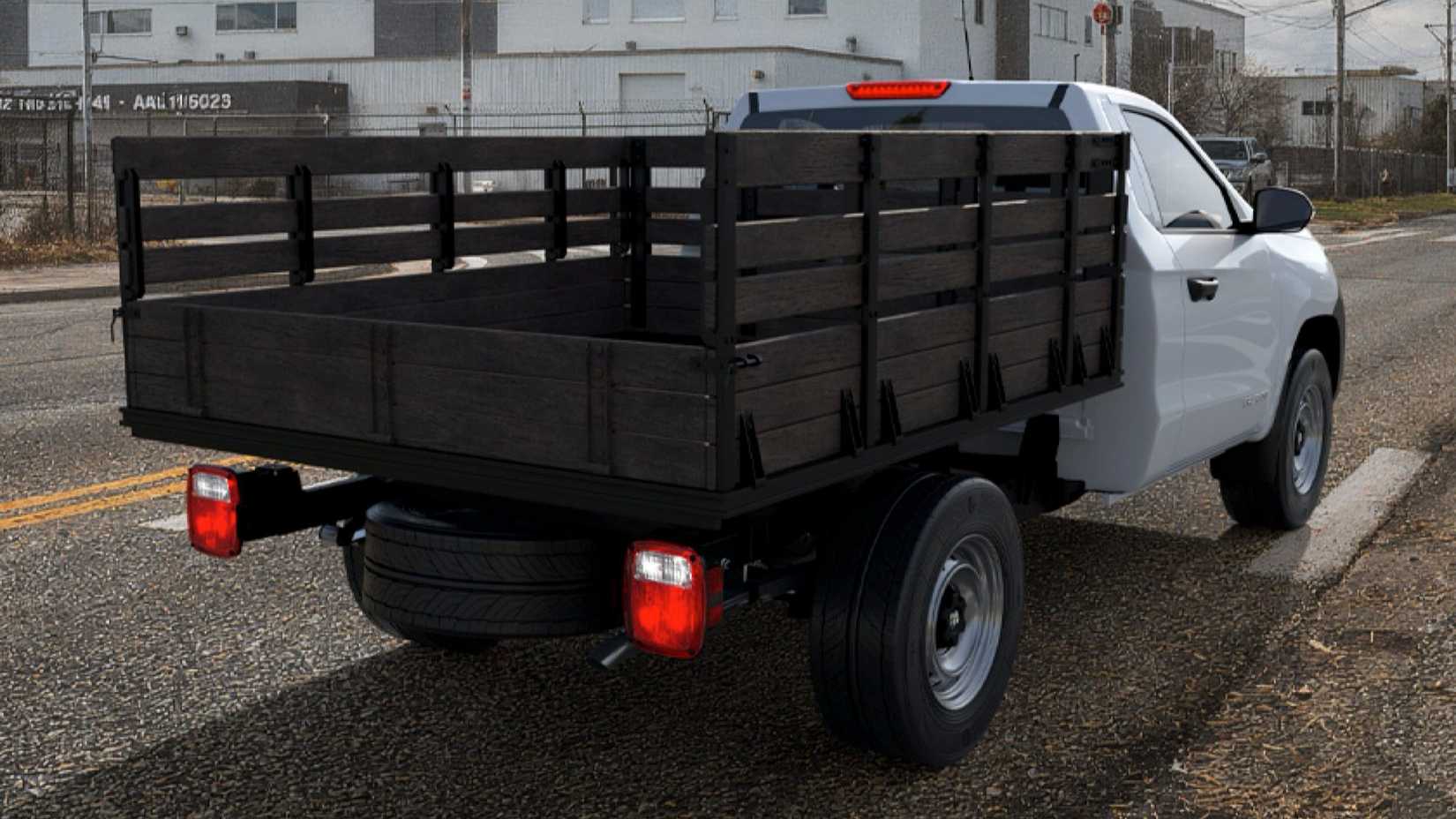Ram is expanding its presence in Latin America, particularly in Mexico, with the all-new 2026 Ram 1200 Tradesman Chassis Cab. This model builds on the existing Ram 1200 lineup in Mexico and is designed as a versatile platform for fleet operators, commercial businesses, and independent tradespeople.
It’s not a fully new vehicle under the skin — a turbocharged 2.0-liter inline-four engine replaces the previous naturally aspirated 2.4-liter unit. Essentially, the 2026 Ram 1200 Tradesman is a rebadged Peugeot Landtrek, a model originally developed through a partnership between Peugeot and Chinese automaker Changan Automobile for emerging markets.
Built In China, Sold In Limited Markets
The Peugeot Landtrek, which debuted in 2024 and is built in China, has been rebranded for Mexico as the Ram 1200. With this refresh, the truck comes with solid capabilities for a midsize, body-on-frame pickup. It can carry up to 2,645 pounds of cargo in the bed and tow as much as 6,613 pounds. Under the hood, the new 2.0-liter turbocharged engine delivers 217 horsepower and 288 lb-ft of torque — an increase of 17 hp and 62 lb-ft over the previous naturally aspirated 2.4-liter unit. Ram also claims a 10% improvement in fuel efficiency compared with the outgoing model. Buyers can choose between a six-speed manual or an eight-speed automatic transmission.
Inside, the Tradesman keeps things simple and durable, featuring cloth seats and a 10.0-inch infotainment screen with standard Apple CarPlay and Android Auto. If you’re thinking that a no-frills, affordable midsize Ram work truck could make sense in the U.S., here’s the kicker: the Ram 1200 is priced at 449,900 MXN, roughly $25,000 USD. For comparison, the entry-level Ram commercial pickup in the U.S., the Ram 1500 with a 3.6-liter V6, produces 305 hp and 269 lb-ft of torque and starts at $40,275 USD.
A Midsize Ram Is Coming To The US, But Not This One
Even if the Ram 1200 were offered in the U.S., it’s unlikely it would arrive at its current Mexican price. And it’s not just a matter of tariffs. The Landtrek platform, and by extension the Ram 1200, was specifically engineered for Latin American and other select markets, not Europe or the U.S. Adapting the truck to meet U.S. safety and emissions regulations would likely add significant costs, pushing the price far higher.
In Mexico, the Ram 1200 lineup already includes four-door models like the Laramie and Bighorn, along with a special edition Rebel. Now, the addition of the Tradesman shows how hard Ram is working to attract Mexican buyers to the brand. At the same time, it highlights a notable gap in the U.S. market: Ram currently doesn’t offer a midsize truck stateside, even as that segment grows rapidly in popularity among buyers seeking affordable, practical pickup options.
That’s set to change, of course, though it’s shaping up to be a slow and deliberate process — especially given the existing platforms Ram could tap into within the Stellantis portfolio. Rather than using an existing chassis, Ram is developing an all-new midsize truck on its own platform, tailored specifically for the U.S. market. Production will take place at the same plant that builds the Jeep Gladiator, though Ram confirms the new truck won’t share Gladiator underpinnings. Don’t expect to see these U.S.-spec trucks on the road until 2027.
Meanwhile, just across the U.S.-Mexico border, American buyers can already catch a glimpse of a rugged midsize Ram that’s currently on sale, giving a taste of what the brand’s future in the segment might look like.
FAQ’s
1. What is the new Ram work truck that launched in Mexico?
Ram recently launched a new work-focused pickup in Mexico designed for commercial and fleet use, offering practicality, toughness, and modern features.
2. Why did Ram launch this truck in Mexico before the U.S.?
Ram chose Mexico first because of strong demand for work trucks in that market and because it allows them to test production and customer response before a U.S. rollout.
3. Is this truck planned for U.S. production?
Yes, Ram has indicated that the truck could eventually be produced or sold in the U.S., pending regulatory approval and market analysis.
4. What size or class is this new Ram truck?
It’s a full-size pickup, designed to handle heavy-duty work tasks while remaining practical for urban and rural environments.
5. What engine options does the truck have?
The Mexico launch includes gasoline and diesel engines, depending on configuration, offering a balance of power and efficiency.
6. Are diesel engines available in this new model?
Yes, diesel variants are offered for those who need high torque for towing and heavy loads.
7. How much horsepower and torque does it produce?
Depending on the engine, the truck produces around 250–300 hp and 400–500 lb-ft of torque, making it capable for work and towing.
8. What transmission and drivetrain options are offered?
The truck comes with automatic transmission and either rear-wheel drive or 4×4 options for flexibility in different work environments.
9. Is it designed primarily for commercial or personal use?
Primarily for commercial and fleet use, though individual buyers who need a rugged work truck may also be interested.
10. How does it compare to the Ram 1500 and 2500 in the U.S.?
It sits below the 2500 in capability but above the base 1500, filling a niche for cost-effective work trucks that can handle moderate commercial tasks.
11. What towing and payload capacity does this truck offer?
The truck offers 1,500–2,500 lbs payload and 5,000–7,000 lbs towing capacity, suitable for most light to medium-duty jobs.
12. How does the truck’s fuel efficiency compare to U.S. models?
Fuel economy is competitive with work trucks in its class, thanks to efficient engine tuning and optional diesel models.
13. Does it feature modern safety and driver-assistance tech?
Yes, it includes basic safety features like ABS, airbags, stability control, and optional rearview cameras — sufficient for work-focused buyers.
14. What interior features are available in the Mexico version?
The interior is practical yet comfortable, with durable seating, basic infotainment, and storage designed for work use.
15. Is it a full-size pickup or a smaller/midsize model?
It’s a full-size pickup, giving it the space and strength needed for professional work tasks.
16. How does the new Ram work truck compete with Ford and Chevrolet offerings?
It’s aimed at budget-conscious commercial buyers who still need reliable towing, payload, and durability, positioning it against models like the Ford Ranger, Chevrolet Colorado, and smaller F-150 variants.
17. Are there plans to sell it in the U.S. soon?
While there’s no official U.S. release date, Ram is evaluating bringing it to the U.S., likely targeting fleet buyers first.
18. What price range is expected if it comes to the U.S.?
If it comes to the U.S., the truck would likely be priced below the Ram 1500 base model, making it an affordable work truck option.
19. Are hybrid or electric versions part of the plan?
Currently, no electrified version has been announced, as this truck focuses on reliability, low cost, and work capability.
20. What makes this truck ideal for work purposes?
It offers durable construction, practical interiors, strong towing and payload capabilities, and reliable engines, all tailored for everyday work tasks.
21. Does it come with specialized trim levels for commercial use?
Yes, commercial trims include vinyl seats, simple interiors, and heavy-duty suspension options to withstand rigorous use.
22. How rugged is the truck’s suspension and chassis design?
It features a reinforced chassis and work-ready suspension, designed to handle heavy loads, rough roads, and daily worksite abuse.
23. Will it be available with 4×4 or all-wheel drive options?
Yes, 4×4 is available for construction sites, farms, and other challenging environments.
24. What cargo bed sizes and configurations are offered?
The truck offers standard and long-bed configurations, giving buyers flexibility for hauling tools, equipment, or materials.
25. How does it handle Mexican roads compared to typical U.S. roads?
It’s designed to handle rougher roads and rural environments in Mexico, which also makes it well-suited for rural or industrial areas in the U.S.
26. Are there any unique features specific to the Mexico launch model?
Yes, features include heavy-duty tires, reinforced bumpers, and simplified maintenance options tailored for commercial buyers in Mexico.
27. How has the market in Mexico responded to this truck?
Early reception has been positive, with buyers praising its durability, affordability, and practical design for work tasks.
28. Does Ram plan to adapt it for U.S. safety and emissions standards?
Yes, any U.S. launch would require compliance with EPA emissions and NHTSA safety regulations, which may involve minor adjustments.
29. How soon could this truck realistically hit U.S. dealerships?
If approved, a U.S. launch could occur within 1–2 years, initially targeting fleet and commercial buyers.
30. How does the new work truck strengthen Ram’s overall lineup?
It fills a gap in the lower-cost, work-ready truck segment, complementing the 1500, 2500, and 3500 lines.
31. Could this truck help Ram compete in fleet and commercial sales in the U.S.?
Yes, it’s tailored for fleet buyers, including small businesses, contractors, and municipalities that need a reliable, affordable truck.
32. Will this truck affect the pricing or positioning of current Ram 1500/2500 models?
It could slightly pressure the lower-end 1500 trims by offering a more affordable work-focused alternative.
33. How does the truck’s size and capability compare to midsize pickups like the Toyota Tacoma or Chevy Colorado?
It’s slightly larger and more capable, offering higher payload and towing capacities while remaining practical for work purposes.
34. Are there plans for a long-bed or crew-cab variant for the U.S. market?
Likely, yes — both long-bed and crew-cab versions would appeal to commercial buyers needing space for passengers or equipment.
35. What’s the overall significance of launching this truck first in Mexico?
Launching in Mexico allows Ram to test production, gauge customer response, and optimize costs before committing to a U.S. launch, while strengthening its presence in a key regional market.



